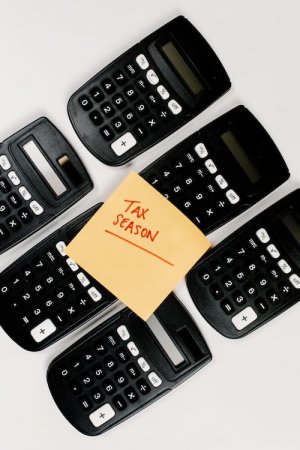Warning: Fraudsters are using fake myGov profiles to hack ATO accounts!
- Replies 19
Sue (not her real name), a recently retired member of the banking and finance industry, was in the middle of discussing a routine tax return with her accountant when he congratulated her on the sale of her house in Footscray, VIC.
But she didn’t own any house in Footscray, much less sell it.
The innocent comment prompted Sue to take a closer look at her records, and what she and her accountant discovered painted a grim picture.
Someone set up a fake ATO account by somehow accessing her existing one, impersonating her, and filing five refunds amounting to a total of $25,000.
But Sue was puzzled as she did her due diligence in avoiding criminals accessing her information online: she never clicked on unfamiliar links, never disclosed sensitive information like passwords, made sure to have her myGov and ATO accounts open only on one device (which she religiously scans for malware and viruses), and even shredded her physical receipts.
In addition, for the months prior to that fateful session with her accountant, she never received any one-time pin (OTP) usually sent to account owners of myGov and ATO when they open their accounts.

‘We found that the address, the (bank) account number, the telephone number, (and) the email had all been changed,’ Sue said.
She then called the ATO for prompt action but much to her dismay, what happened next left much to be desired.
‘I think it was about three hours I sat in my poor accountant’s office that day,’ she recalled.
Sue said the ATO was able to lock her account, but was told essentially it was all up to her when she asked if the tax office would be able to inform authorities on her behalf about the newly-discovered fraud.
This included telling UBank, where the fraudster had funnelled the $25,000 in tax refunds that she never filed.
‘The answer to that was no, that was entirely up to me,’ she said.
What’s more, Sue was also told to wait for an ATO case manager to be in touch with her — and it was too long to bear.
‘The time period in which they were likely to even start investigating was indicated to be around about three weeks,’ Sue said.
‘So whoever's perpetrating this could be long gone before they even look.’
Sue then reached UBank herself, but after hours on the phone, all she had for her efforts was an instruction to write to the bank’s parent company, the National Australian Bank.
After weeks of waiting, Sue finally got a response from the ATO and was given a clear picture of what transpired.

On September 24, a fraudster created a bogus myGov account and linked it to her ATO account using her tax file number (TFN), her birthday, and another unspecified credential.
The fraudster then changed her personal details, and cut off her original myGov account. This action inevitably barred her from receiving any notice of changes to her ATO account as well as receiving an access code before logging in.
Sue claims the ATO representative who informed her of what happened told her ‘there are lots of fraudulent myGov accounts accessing tax files’.
According to the ABC, Services Australia confirmed that only an email address is required to create a myGov account. In addition, no proof of identity is needed and there is no limit to how many accounts can be opened.
Still, Sue was left questioning how anyone could have accessed her TFN — even with what she called ‘a gaping hole’ in opening a myGov account.
She is also a victim of the Optus data breach, but to the best of her knowledge TFNs were not among the information leaked in the cyber attack.
It was also revealed that in transferring money, fraudsters took out amounts small enough to evade attention while using multiple accounts as destinations.
The fraudsters changed her bank details in between transactions too as an added measure.

But wouldn’t the rapid changes have been flagged at any point? Well, according to Sue, the ATO told her they didn’t see anything suspicious right up until she reported her situation.
They have since stepped up their detection measures and maintain that the measures in place are ‘robust’, but Sue can’t help but feel like the response she got was lacking and that the ATO should be more alarmed.
‘Most people aren't even going to look at their tax accounts until next July,’ Sue said.
‘If this is actually a whole lot of other people as well... they're never even going to know this is happening. This could be going on willy-nilly until (then). ‘
‘It could be millions of dollars, or even worse. As taxpayers, we're all going to end up wearing that.’
Be sure to check your ATO accounts, members!

In related news, Aussies are also being warned of a scam text targeting myGov users that can trick people out of their sensitive information.
Be sure to check out stories at our Scam Watch forum to be updated on the latest ways these nasty buggers want to swindle our hard-earned money.
So, what is your reaction to Sue’s story?
Tell us below!
But she didn’t own any house in Footscray, much less sell it.
The innocent comment prompted Sue to take a closer look at her records, and what she and her accountant discovered painted a grim picture.
Someone set up a fake ATO account by somehow accessing her existing one, impersonating her, and filing five refunds amounting to a total of $25,000.
But Sue was puzzled as she did her due diligence in avoiding criminals accessing her information online: she never clicked on unfamiliar links, never disclosed sensitive information like passwords, made sure to have her myGov and ATO accounts open only on one device (which she religiously scans for malware and viruses), and even shredded her physical receipts.
In addition, for the months prior to that fateful session with her accountant, she never received any one-time pin (OTP) usually sent to account owners of myGov and ATO when they open their accounts.

A routine tax procedure ended up giving Sue the shock of a lifetime. Stock Image Credit: Pexels/Tara Winstead
‘We found that the address, the (bank) account number, the telephone number, (and) the email had all been changed,’ Sue said.
She then called the ATO for prompt action but much to her dismay, what happened next left much to be desired.
‘I think it was about three hours I sat in my poor accountant’s office that day,’ she recalled.
Sue said the ATO was able to lock her account, but was told essentially it was all up to her when she asked if the tax office would be able to inform authorities on her behalf about the newly-discovered fraud.
This included telling UBank, where the fraudster had funnelled the $25,000 in tax refunds that she never filed.
‘The answer to that was no, that was entirely up to me,’ she said.
What’s more, Sue was also told to wait for an ATO case manager to be in touch with her — and it was too long to bear.
‘The time period in which they were likely to even start investigating was indicated to be around about three weeks,’ Sue said.
‘So whoever's perpetrating this could be long gone before they even look.’
Sue then reached UBank herself, but after hours on the phone, all she had for her efforts was an instruction to write to the bank’s parent company, the National Australian Bank.
After weeks of waiting, Sue finally got a response from the ATO and was given a clear picture of what transpired.

Somehow, fraudsters managed to leech $25,000 in total from Sue despite her diligence. Stock Image Credit: Pexels/Sora Shimazaki
On September 24, a fraudster created a bogus myGov account and linked it to her ATO account using her tax file number (TFN), her birthday, and another unspecified credential.
The fraudster then changed her personal details, and cut off her original myGov account. This action inevitably barred her from receiving any notice of changes to her ATO account as well as receiving an access code before logging in.
Sue claims the ATO representative who informed her of what happened told her ‘there are lots of fraudulent myGov accounts accessing tax files’.
According to the ABC, Services Australia confirmed that only an email address is required to create a myGov account. In addition, no proof of identity is needed and there is no limit to how many accounts can be opened.
Still, Sue was left questioning how anyone could have accessed her TFN — even with what she called ‘a gaping hole’ in opening a myGov account.
She is also a victim of the Optus data breach, but to the best of her knowledge TFNs were not among the information leaked in the cyber attack.
It was also revealed that in transferring money, fraudsters took out amounts small enough to evade attention while using multiple accounts as destinations.
The fraudsters changed her bank details in between transactions too as an added measure.

Sue can’t help but feel disappointed with proceedings on her case. Stock Image Credit: Pexels/cottonbro studio
But wouldn’t the rapid changes have been flagged at any point? Well, according to Sue, the ATO told her they didn’t see anything suspicious right up until she reported her situation.
They have since stepped up their detection measures and maintain that the measures in place are ‘robust’, but Sue can’t help but feel like the response she got was lacking and that the ATO should be more alarmed.
‘Most people aren't even going to look at their tax accounts until next July,’ Sue said.
‘If this is actually a whole lot of other people as well... they're never even going to know this is happening. This could be going on willy-nilly until (then). ‘
‘It could be millions of dollars, or even worse. As taxpayers, we're all going to end up wearing that.’
Be sure to check your ATO accounts, members!
Key Takeaways
- Fake myGov profiles are being used to hack ATO accounts, according to a recent ABC report.
- A woman named Sue (not her real name) found that about $25,000 was funneled from her account without her knowledge while on a routine procedure with her accountant.
- Following the account breach, Sue was forced to go through the arduous process of reporting it to authorities and waiting for weeks to get a response as to what happened .
- ABC found alarmingly few restrictions around creating bogus myGov accounts.
- This highlights the need for better security and protection in the myGov and ATO systems to ensure more personal information remains safe and secure.
Be sure to check out stories at our Scam Watch forum to be updated on the latest ways these nasty buggers want to swindle our hard-earned money.
So, what is your reaction to Sue’s story?
Tell us below!







